TeachingBooks.net is delighted to welcome award-winning illustrator Denise Fleming as our featured guest blogger this month.
Each month, we ask distinguished authors or illustrators to write an original post that reveals insights about their process and craft. Enjoy!
Pulp Painting in the Zone
by Denise Fleming
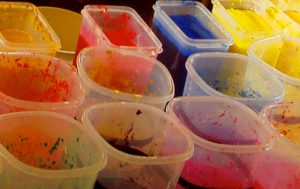 Bookmaking is about creating, but it is also about process.
Bookmaking is about creating, but it is also about process.
Most of my daily life is pretty haphazard. I don’t get up at the same time each day, I don’t eat meals at a set time, I go to bed when I feel like it, and I am not always sure what day of the week it is. Sometimes I get dressed; sometimes I work in pajamas. You get the idea.
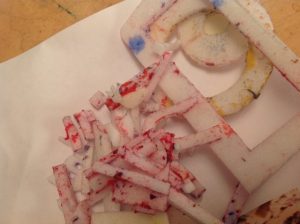 But when I walk into the studio to create art, there is a process (and steps to follow) to reach the result I desire. First, there’s the idea, which I turn into a manuscript. Next, I craft a book dummy book comprised of text and sketches. Then I refine the drawings and cut stencils.
But when I walk into the studio to create art, there is a process (and steps to follow) to reach the result I desire. First, there’s the idea, which I turn into a manuscript. Next, I craft a book dummy book comprised of text and sketches. Then I refine the drawings and cut stencils.
Recycled cotton fiber must be ordered and beaten to my specifications: medium density for the white base sheet and very fine for the colors. I dye the fine fiber, testing the color; the pulp is wet when I use it, but dries much lighter, so it is important to let it dry to check the results first.
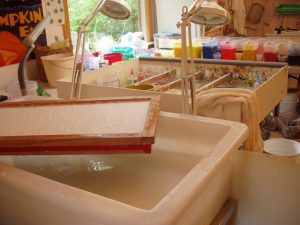 Once these steps have been followed, I set up the fiberglass screen and start pouring the fiber/water mix onto it.
Once these steps have been followed, I set up the fiberglass screen and start pouring the fiber/water mix onto it.
Once I begin pouring, I am in the “zone,” nothing else matters. I am completely focused on the art, unaware of what is going on around me. This is the “high” of creating. Pails of glorious color surround me, fibers flow across the screen, and colors spread and merge as they create new shades and textures. I can hear the sound of dripping water, but there’s very little conscious thinking—just doing—making paper and a picture at the same time. It’s the best.

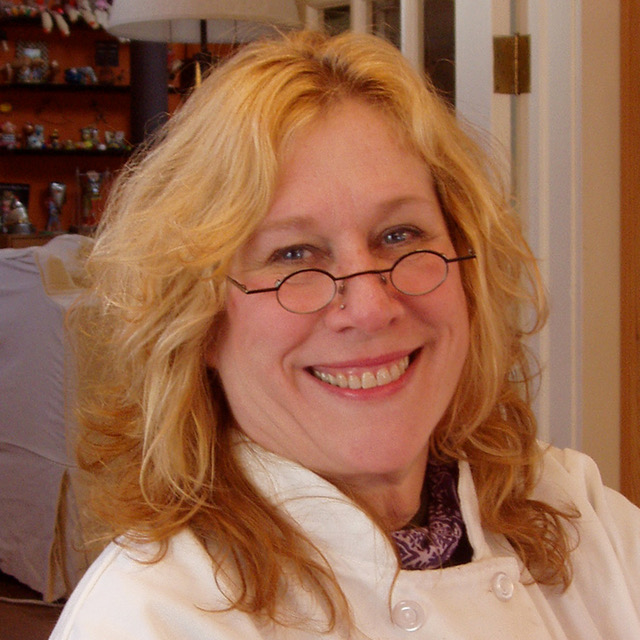
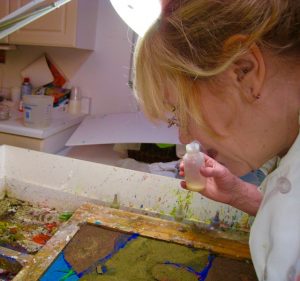
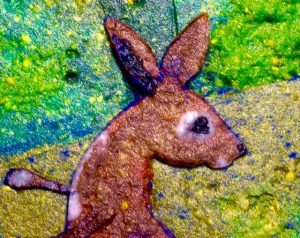

Leave a Reply